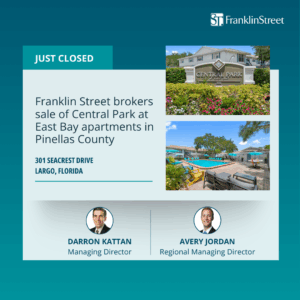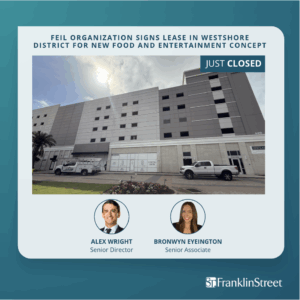MIAMI—Hurricane season is officially upon us. Although Colorado State University forecasters are predicting a quiet Atlantic hurricane season with nine tropical storms and only three hurricanes, that’s still nine tropical storms and three hurricanes—and anything could happen.
GlobeSt.com caught up with Evan Seacat, a director for Franklin Street Insurance Services, to get some insights into what commercial property owners do from an insurance perspective to prepare in part one of this exclusive two-part interview. Be sure to return this afternoon for more insights, from underinsurance to construction records to deductibles.
GlobeSt.com: With a new hurricane season upon us, what should commercial property owners do from an insurance perspective to prepare?
Seacat: Commercial real estate owners been very fortunate over the past eight hurricane seasons. With storm forecasters predicting near-normal or a below-normal hurricane season this year, it’s important to remember that it only takes one landfall to cause significant damage to property forcing insurance claims to be filed.
Before that happens, a building owner needs answers to two questions: Is my property and casualty policy in order? And, am I getting the best coverage for my premium cost?
GlobeSt.com: What can building owners do now to try and save money on their policies?
Seacat: The answers don’t involve shopping around for a new policy. Policies written during, and even within months of the hurricane season, can be anywhere from 10% to 30% higher than those written outside of June through November.
Time is better spent reviewing your properties and policies. Be sure to have proper precautionary measures in place at each location—clean gutters, reinforce roofs—these efforts could avoid costly claims. Reviewing your policy and understanding your coverage also helps avoid any surprises that may arise when a claim is filed.
GlobeSt.com: Can commercial property owners take advantage of mitigation credits?
Seacat: Credits are based on a number of factors such as location, when your building was completed, when and how your roof was constructed and window protections. Start by obtaining a building inspection, which is inexpensive compared to the potential savings.
Compare the report to what you have on file with the insurer. For example, one property owner in South Florida lost 10 years’ worth of savings because they did not conduct an inspection and correct the windstorm mitigations on his properties. After we updated the policy, our client saved nearly $150,000 in one year by providing their insurer with the correct portfolio information. Download PDF



